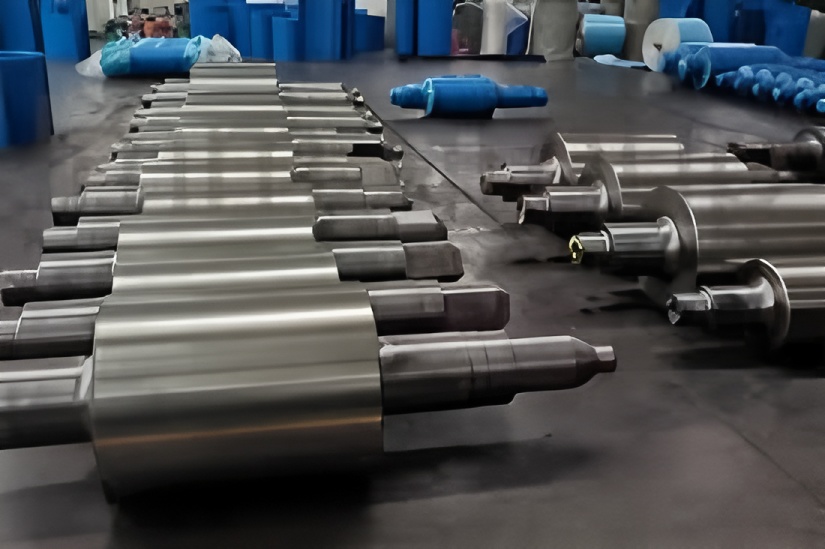Reducing rolling mill incidents, enhancing the accident resistance of roll materials, and implementing comprehensive surface wave combined with eddy current testing before roll installation can prevent spalling caused by the propagation of surface cracks.
Keyword: Cold Rolled Work Rolls
Spalling of the working layer is a common failure mode in cold rolling rolls, accounting for over 50% of normal work roll failures. Based on origin, spalling in cold rolling rolls is mainly categorized into three types: spalling due to surface cracks, sub-surface material defects, and contact stress. Spalling originating from surface cracks often exhibits visible fatigue propagation bands in the affected area. These bands may range from several inches to multiple circumferential loops around the roll, appearing either bright (due to friction) or dull (due to oxidation). The main fatigue crack typically propagates opposite to the roll’s rotation direction, and surface cracks are often detectable by examining spalled fragments or intact areas of the roll surface.
The roll under study has the following design specifications:
Dimensions: Φ535 mm × 1219.2 mm × 3523.35 mm
Material: Cr5
Hardness requirement: 94–98 HSD (quenched)
Hardened layer depth: ≥ 32.5 mm
Scrap hardness: ≥ 90 HSD

Case Description
During stable operation at 1100 m/min on a 1220 mm cold rolling mill, a strip break alarm was triggered at stands 4# and 5#. Post-stop inspection revealed severe cobble entry at stand 3#. The lower work roll at stand 3# showed large-area spalling approximately 20 mm deep, with visible indentations and cracks. The lower backup roll edge was also visibly crushed.
The original diameter of the failed roll was Φ535 mm; the current diameter was Φ485.9 mm. The overall failure morphology is shown in Figure 1.
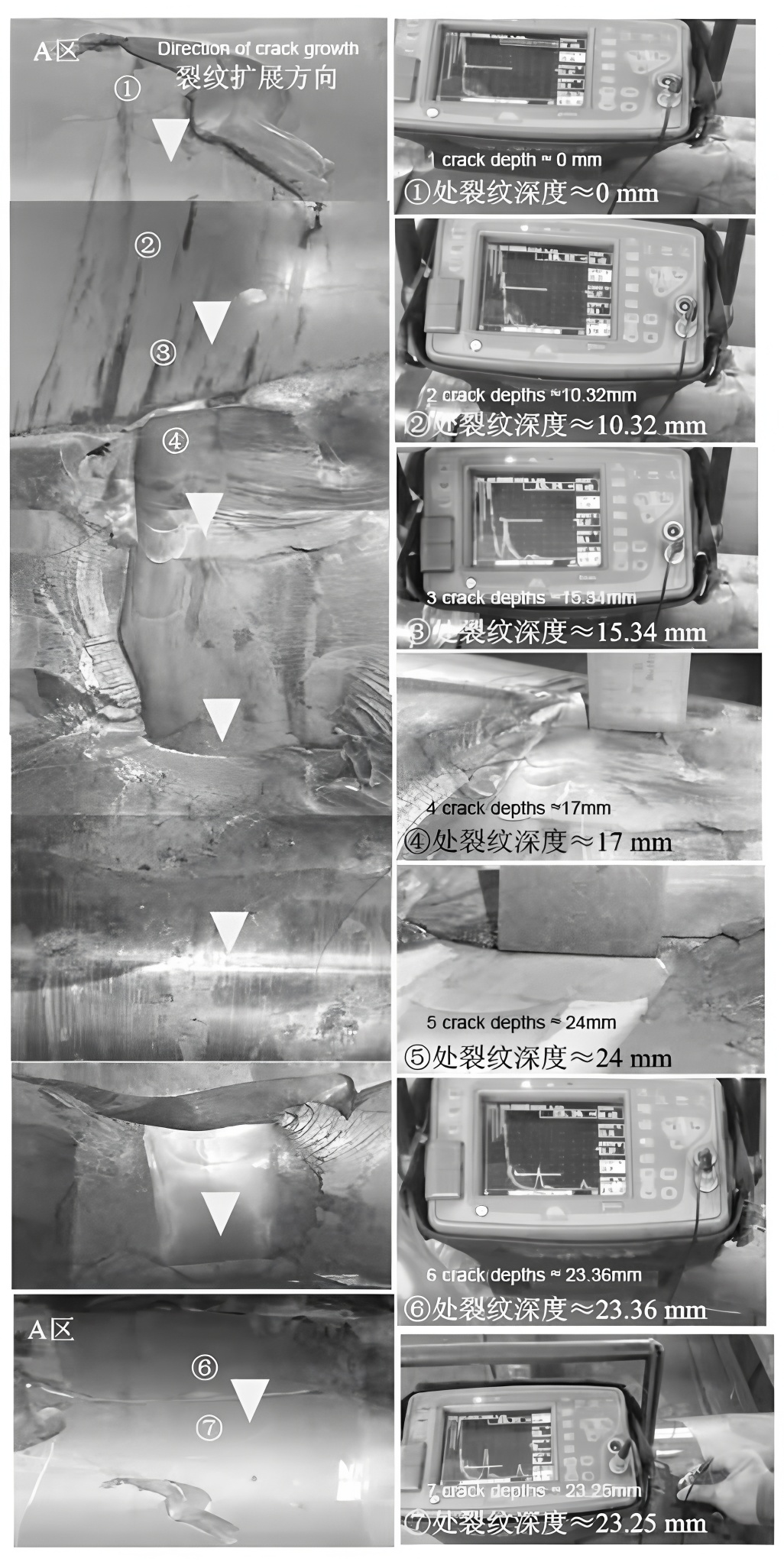
Morphological Analysis
The spalling zone exhibits a “bridge” morphology formed by two spalled segments connected by a non-spalled region (Area A). Fatigue propagation tracks are visible on the roll surface, rotating clockwise from Area A.
Ultrasonic testing confirmed circumferential crack propagation originating in Zone A. Although the front spalling zone had not fully detached, subsurface voids had formed due to crack growth. Crack orientation and depth are illustrated in Figure 2.
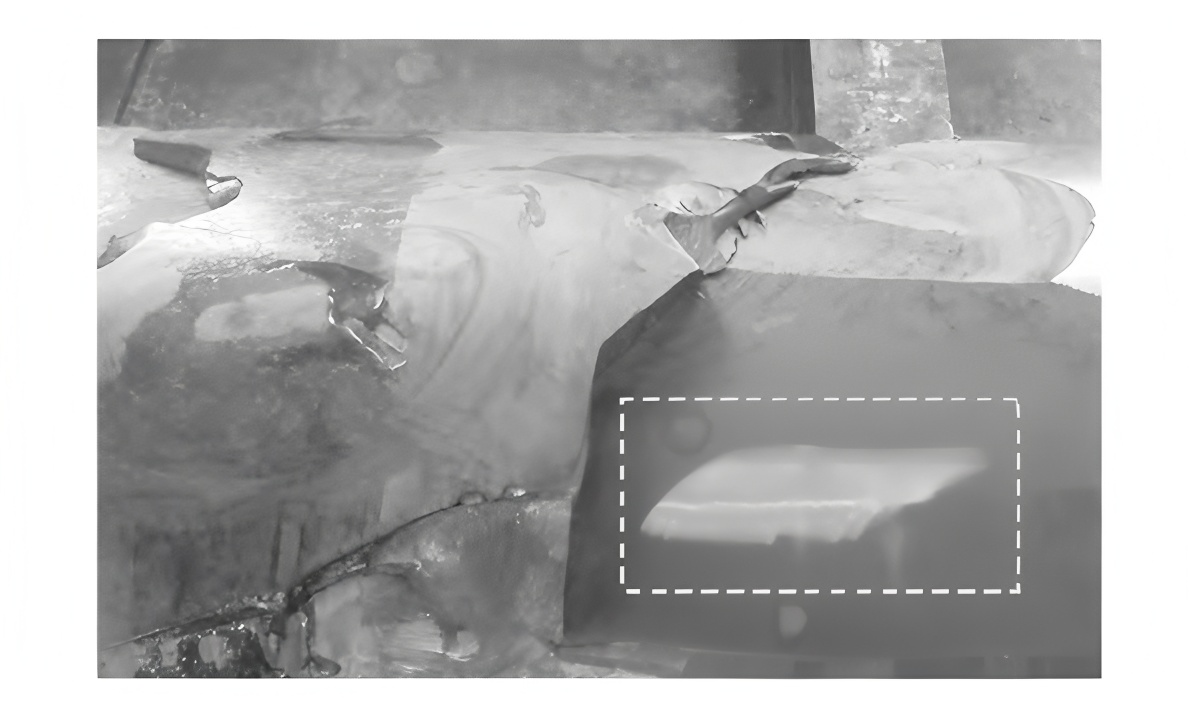
Hardness Testing
The roll surface hardness in non-spalled areas measured 92–93 HSD, still meeting design requirements (94–98 HSD; scrap threshold 90 HSD). In the spalled region, the hardness 24 mm below the surface dropped to approximately 84 HSD, indicating that spalling occurred within the soft–hard transition zone of the roll (Figure 3).
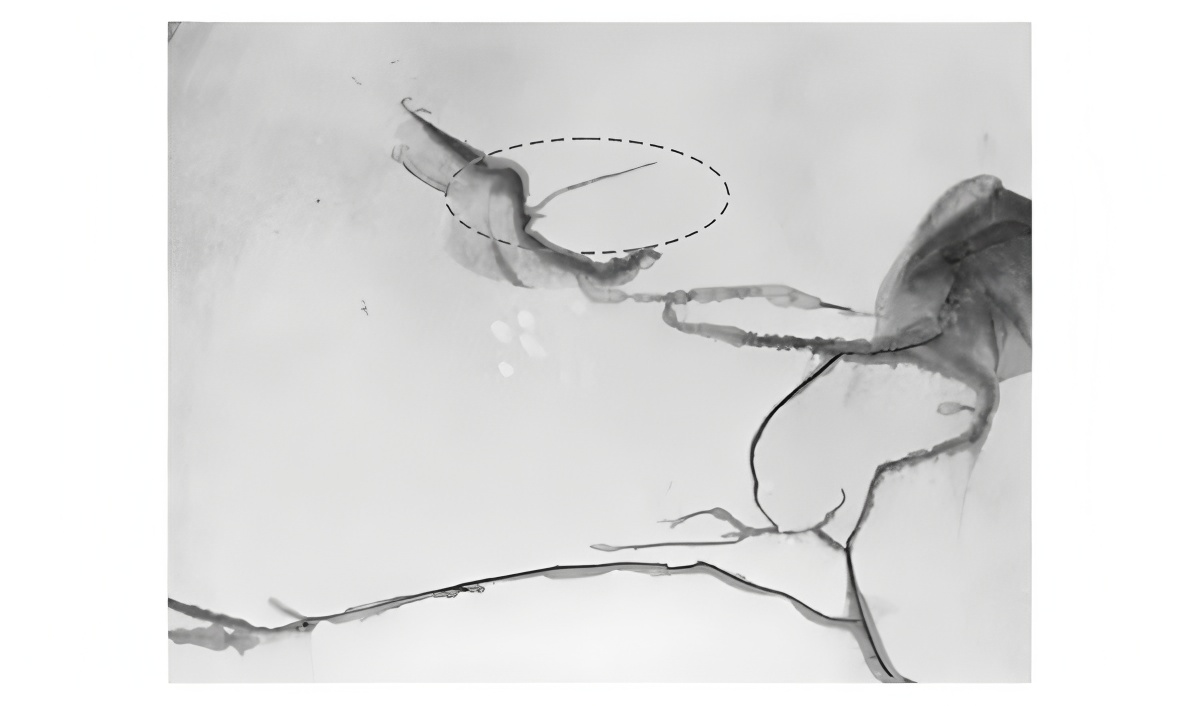
Spalling Origin Analysis
Ultrasonic results indicated full circumferential propagation of internal fatigue cracks originating in Zone A. The crack initiated on the surface, propagating inward opposite to the roll rotation direction at nearly 90°. Upon reaching the soft–hard transition interface (~29 mm deep), crack growth shifted circumferentially due to higher toughness in the core material. After completing a full loop, the roll rapidly lost stability under rolling stress, resulting in large-area spalling.
Dye penetrant inspection of Zone A revealed an axial surface crack aligned with the fatigue band, identifying it as the spalling origin (Figure 4). Metallographic and SEM analysis of the crack source (Figures 5–6) showed no significant metallurgical defects or microstructural abnormalities beside the crack. Slight secondary tempering near the crack suggests possible localized thermal shock during service.
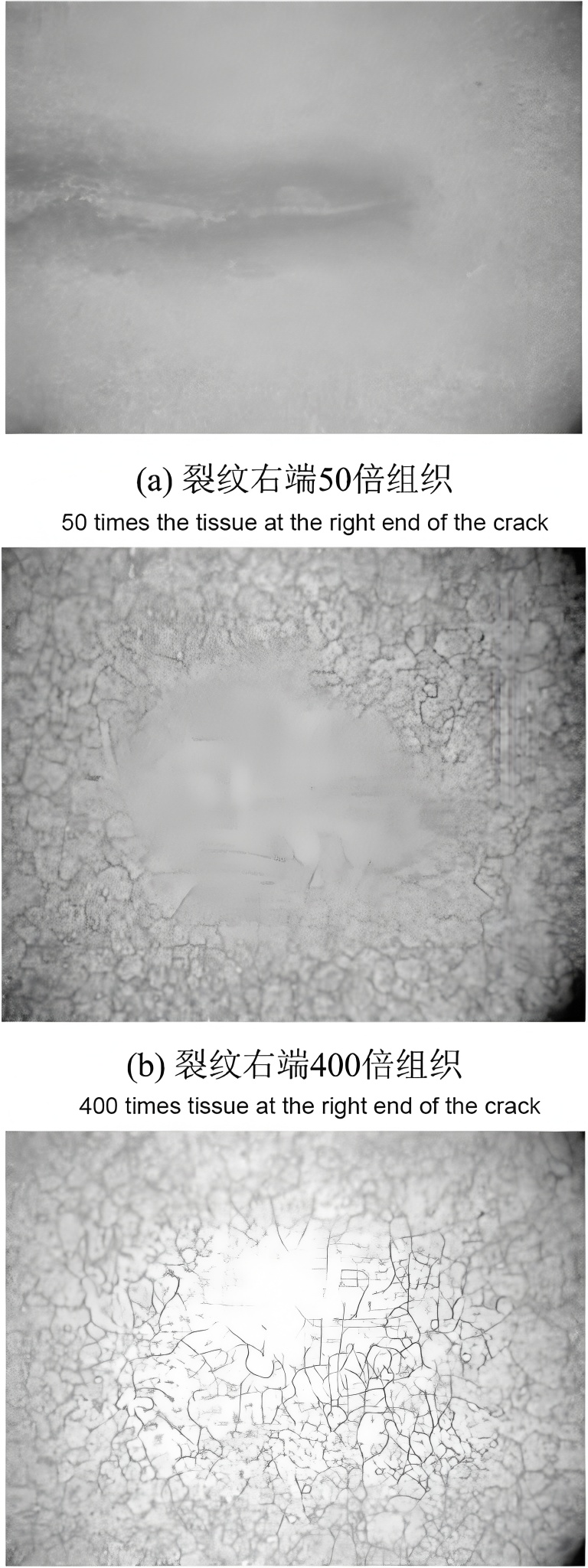
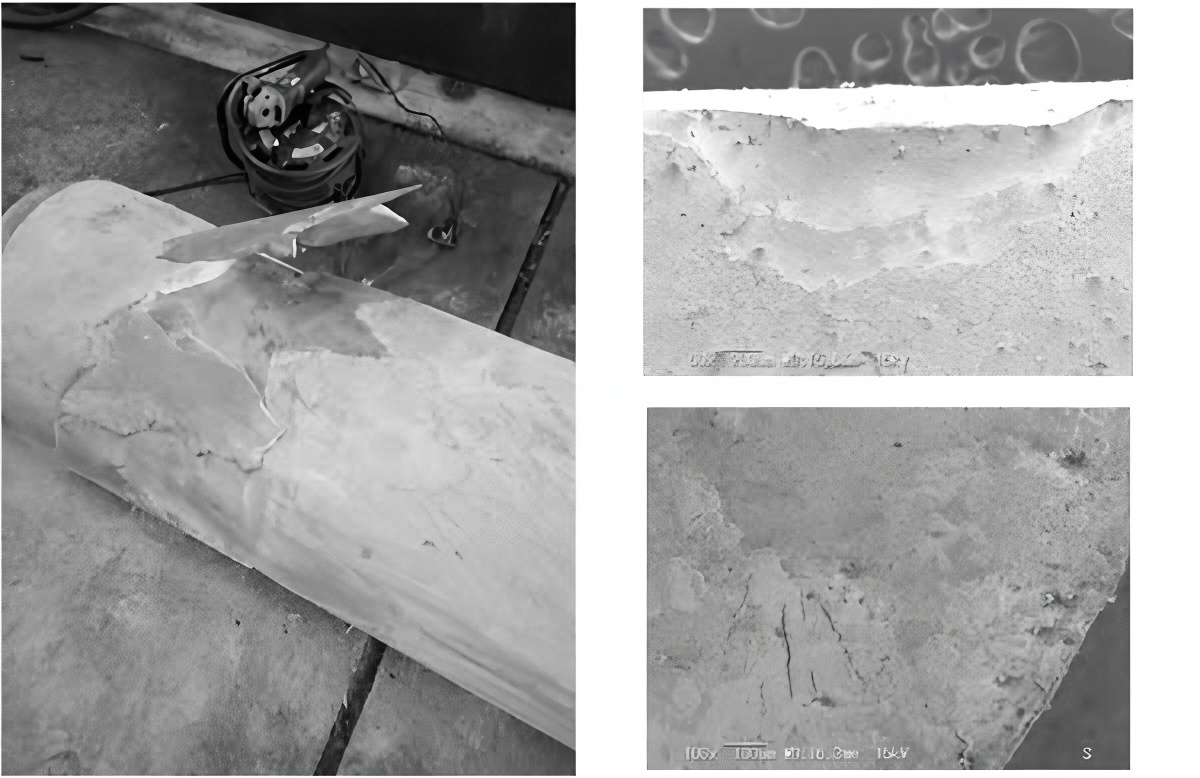
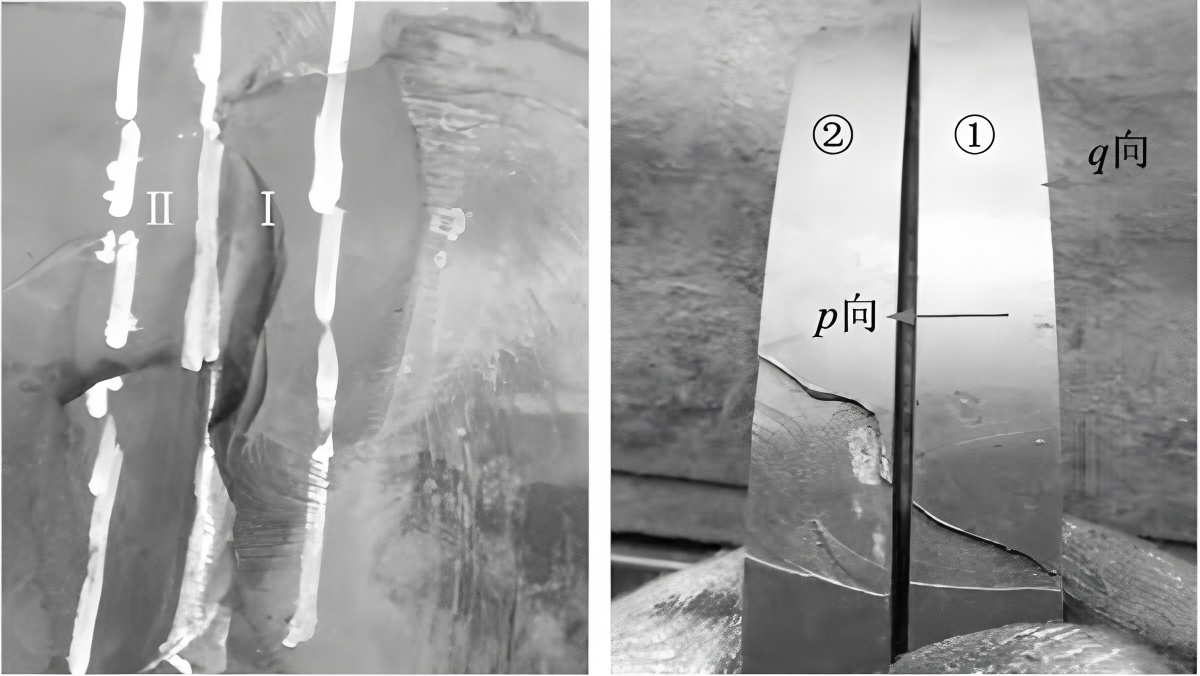
Metallographic Analysis
The spalled block was sectioned via high-temperature tempering (Figure 7). Two fatigue propagation bands (I and II) were observed originating from Zone A, with Band II connecting to the main propagation track on the roll surface.
Wire cutting was performed along marked paths (Figure 8a) to obtain test blocks (Figure 8b). Cross-sectional analysis (Figure 9) revealed crack propagation inward at 20°–30° to the surface. Upon reaching the tough transition zone, cracking continued circumferentially, forming Bands I and II.
Further sectioning of Test Block ① (Figure 10) allowed detailed metallographic examination along the crack path (Figures 11–12). The microstructure on both sides of the crack consisted of tempered martensite with granular carbides, with no evidence of carbide banding, non-metallic inclusions, or other metallurgical defects. This confirms that the crack was not caused by inherent material quality but rather by operational or maintenance factors.
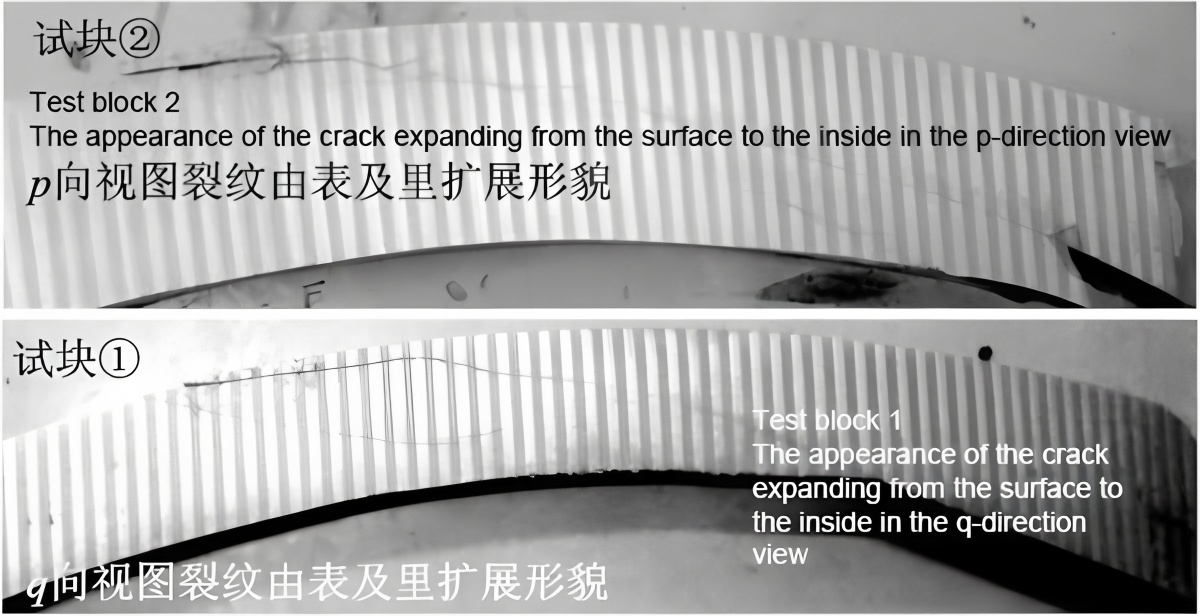
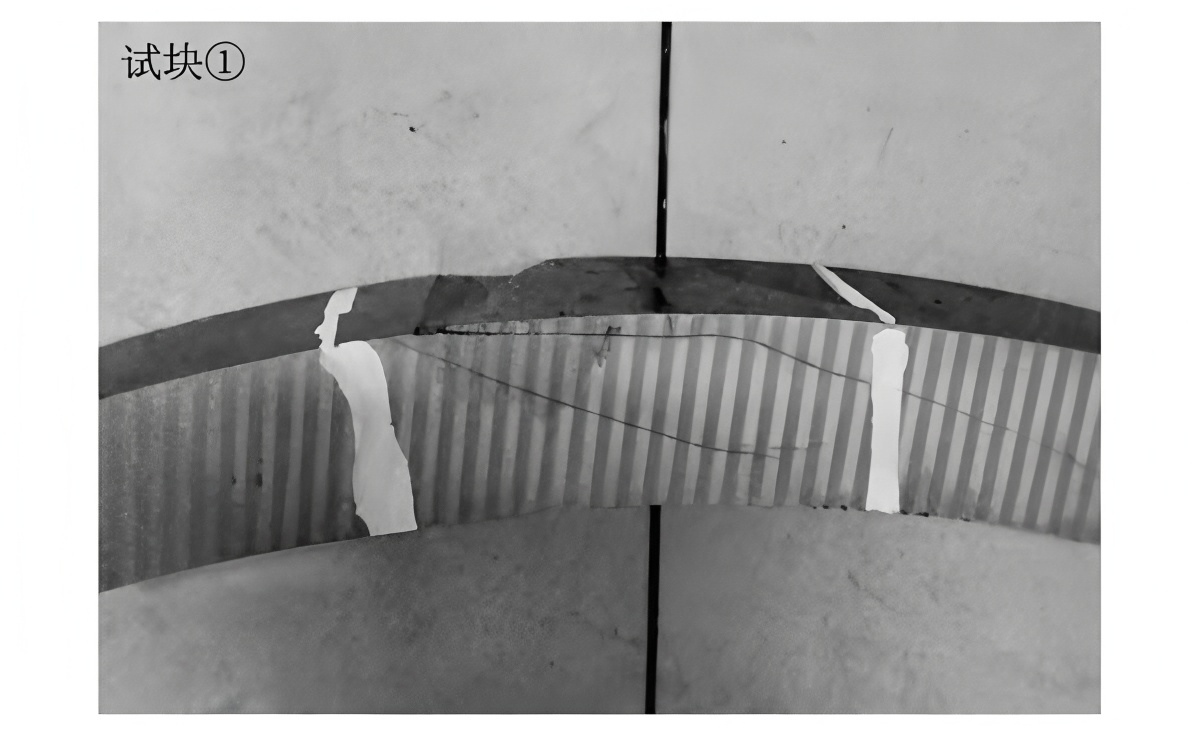


Discussion
Integrated ultrasonic, hardness, and metallographic analyses indicate that the failure resulted from fatigue spalling originating at the surface. The crack propagated inward and circumferentially along the soft–hard interface until structural instability led to spalling.
The absence of metallurgical defects at the crack source suggests that the initiation was unrelated to material quality. The observed minor secondary tempering implies previous thermal shock, possibly from a cobble or overheating incident, with insufficient post-incident grinding to fully remove the heat-affected zone.
Review of grinding records showed that only eddy current testing was performed before the last installation, with no anomalies detected. However, a crack alarm was triggered during the second coil rolled. This suggests that a micro-crack existed prior to installation. Eddy current testing has limited sensitivity to micro- or sub-surface cracks, allowing the damaged roll to be placed into service where the crack propagated under rolling stress.
Conclusion
To prevent similar failures, it is essential to reduce mill incidents, improve roll material accident resistance, and implement comprehensive surface wave combined with eddy current testing before roll installation. These measures can effectively avoid spalling caused by the propagation of surface cracks.

